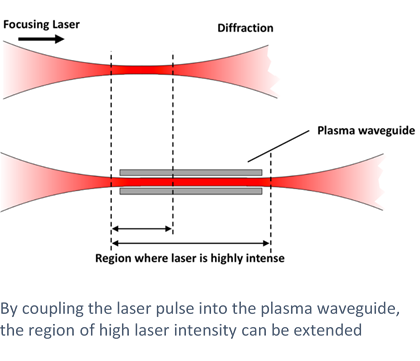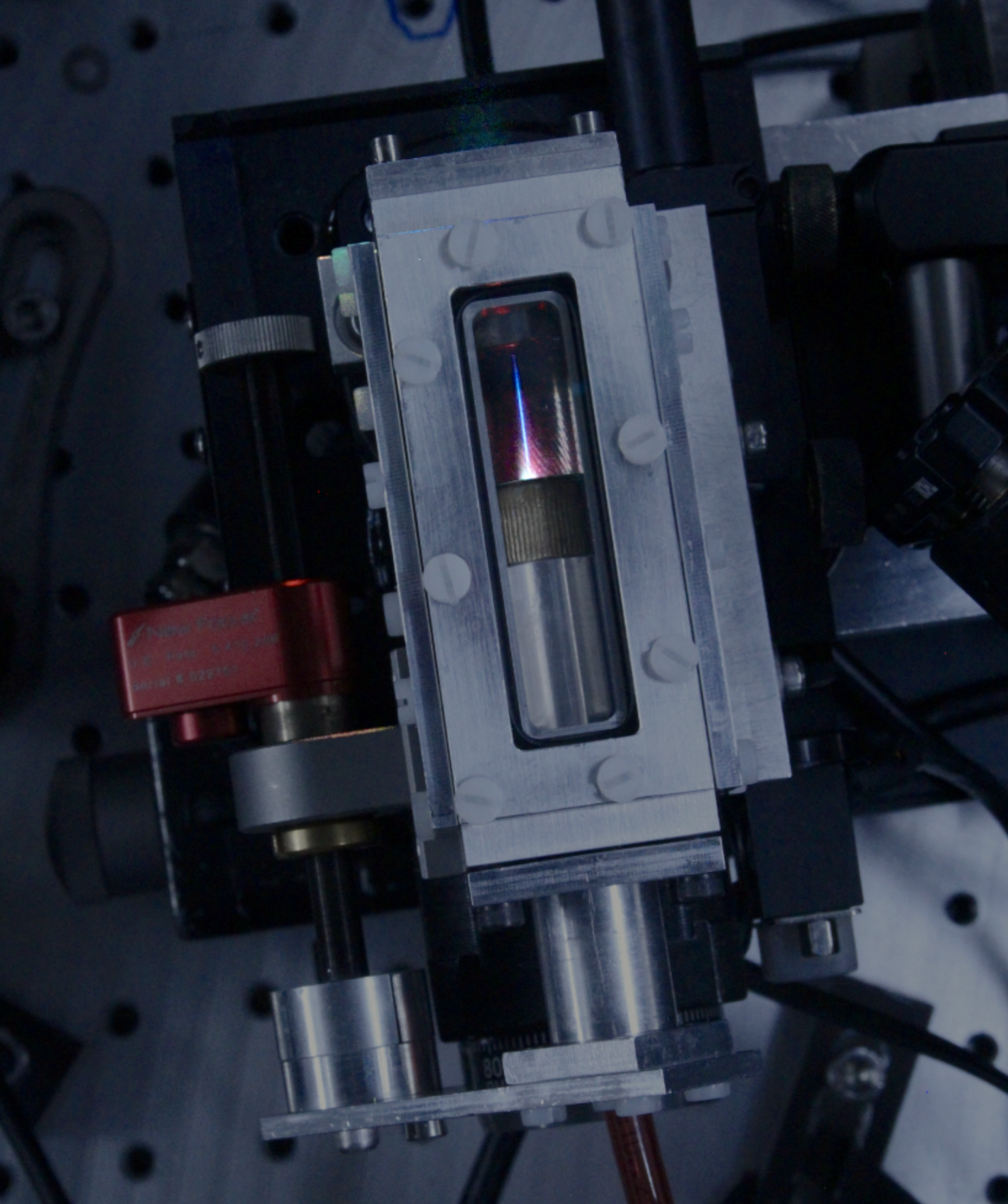A team of scientists from Oxford, Liverpool, Maryland and the Central Laser Facility have been creating what are essentially fibre-optic cables to channel light through – except the “cables" are made of 100,000 degrees Celsius plasma, and the light is an extremely powerful laser pulse.
Improving this process, which has been the subject of research for nearly 30 years, is important because being able to create a continued “line" of focussed light could lead to improving the next generation of laser-driven particle accelerators.
Compact particle accelerators such as laser plasma accelerators offer huge potential in scientific research, medicine and industry. High energy laser plasma accelerators could be used in future compact TeV particle colliders for fundamental particle physics research, and in compact light sources providing beams similar to those produced by large synchrotrons, but on a much smaller scale. Accelerators on this small scale (room size) are also useful because they show promise as devices for Very High Energy Electron (VHEE) cancer therapy as well as new devices for high resolution medical imaging, which could be housed in hospitals.
In addition, tiny laser-driven particle accelerators are similarly useful to industry as they can be used to take ultrafast images of components to inspect their performance and structure.
To generate the high-intensities that are useful in laser plasma experiments, it is necessary to focus laser light down to a very small spot usually much less than the width of a human hair. The issue is that when you focus light down to a small spot, it immediately starts to spread out again in a process called diffraction.
What the team aimed to do, was focus a laser pulse down and capture it whilst it was still small, then to guide that small, highly intense laser pulse over very long distances. This could make the application of the beam more effective in scientific experiments and in applications.
In order to achieve this, the team used the Astra laser facility housed at the CLF, which is a part of the larger Gemini laser. They split the laser into two laser beams and used one of  the beams to create a long plasma pipe or 'waveguide'. They then threaded the second highly intense laser beam into the end of the plasma pipe where it was captured and guided over a long distance.
the beams to create a long plasma pipe or 'waveguide'. They then threaded the second highly intense laser beam into the end of the plasma pipe where it was captured and guided over a long distance.
The plasma pipe was created by firing one of the beams into a box of hydrogen gas to create a long cylinder of hot plasma with a temperature of over 100,000 degrees Celsius, which is hotter than the surface of the sun! This caused the plasma cylinder to explode outwards at speeds approaching 30 kilometres per second, driving a blast wave into the cold surrounding gas. After a few billionths of a second, a pipe like structure had formed into which the researchers could then pass the second laser pulse. Within a fraction of a second, the whole structure disappeared and could easily be formed again with a fresh laser pulse.
 Researcher Rob Shalloo, recalling the moment they saw the first results said; “After months of careful planning, building and debugging, it was an amazing feeling sitting in the control room and seeing that first guided laser pulse emerge out of the end of the waveguide. It was an almost perfect copy of the input pulse demonstrating the high-quality of these new waveguides."
Researcher Rob Shalloo, recalling the moment they saw the first results said; “After months of careful planning, building and debugging, it was an amazing feeling sitting in the control room and seeing that first guided laser pulse emerge out of the end of the waveguide. It was an almost perfect copy of the input pulse demonstrating the high-quality of these new waveguides."
“We had a really great team of people who put in a lot of hard work to develop these low-density plasma waveguides. The results are very exciting, showing the waveguides to be very stable, efficient and reproducible. These waveguides hold great promise as acceleration stages for the next generation of laser driven plasma accelerators."
The novel method which allows for lowering of the density of the plasma heightens the energy of the electrons, which is a route to creating more effective laser-driven particle colliders and synchrotrons. The team, which was led by Prof. Simon Hooker at Oxford, hopes to continue developing this low-density plasma technique in future experiments at the CLF using the more powerful Gemini laser.
To read more about the experiment read the article in Physical Review Accelerators and Beams: https://journals.aps.org/prab/abstract/10.1103/PhysRevAccelBeams.22.041302
Group photo: left to right - Laura Corner, Jimmy Holloway, Chris Arran, Rob Shalloo, Chris Thornton, Alex Picksley.
Image 1: Illustration of the plasma waveguide experimental setup.
Image 2: Photograph of the plasma waveguide.
